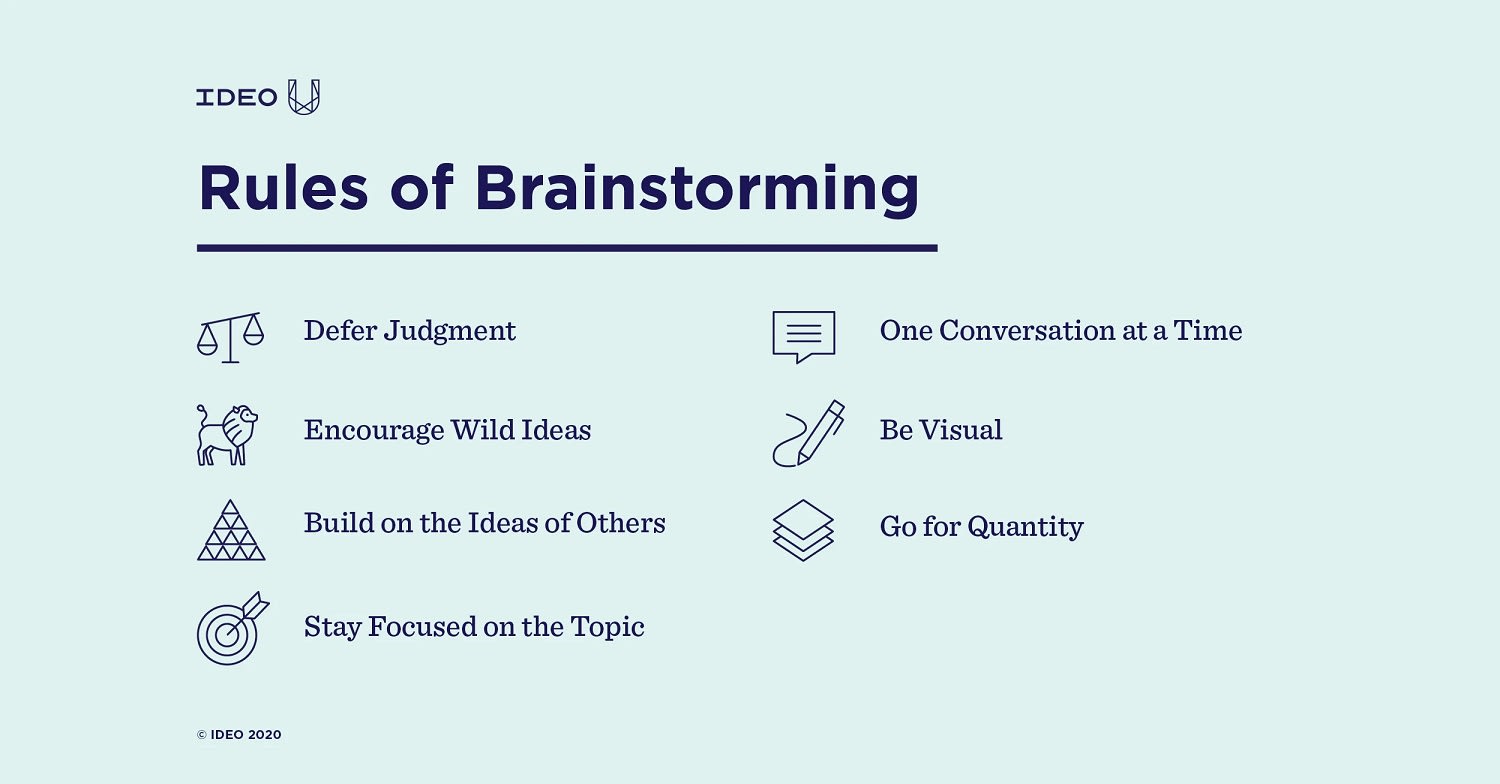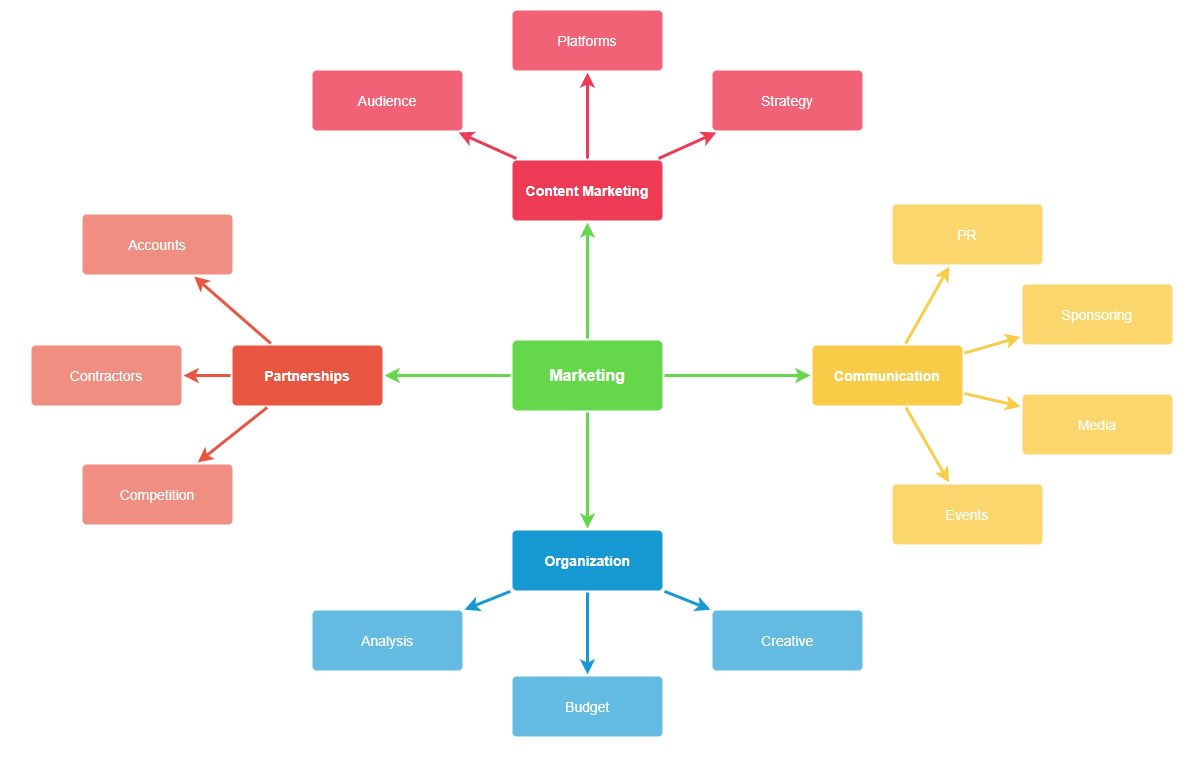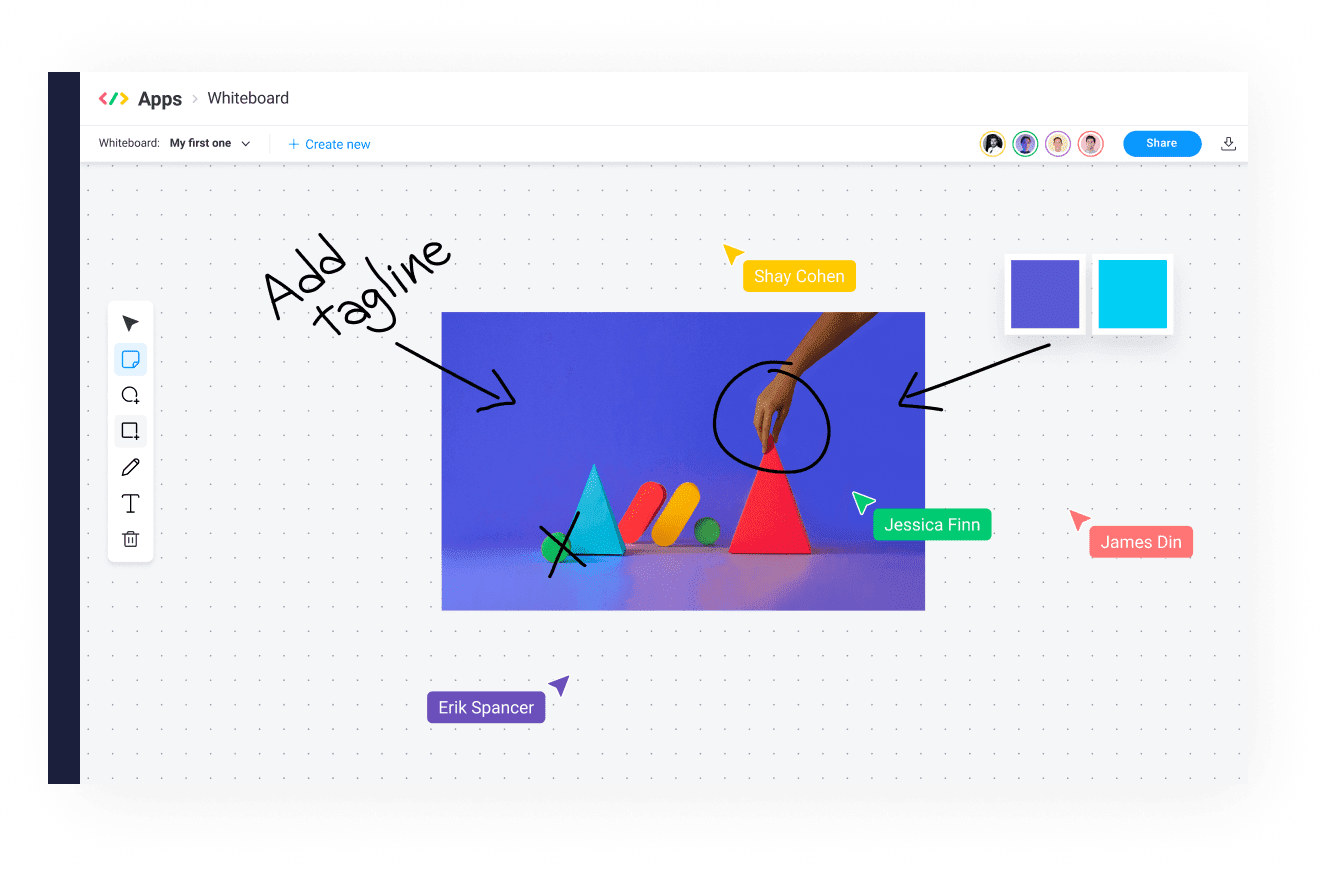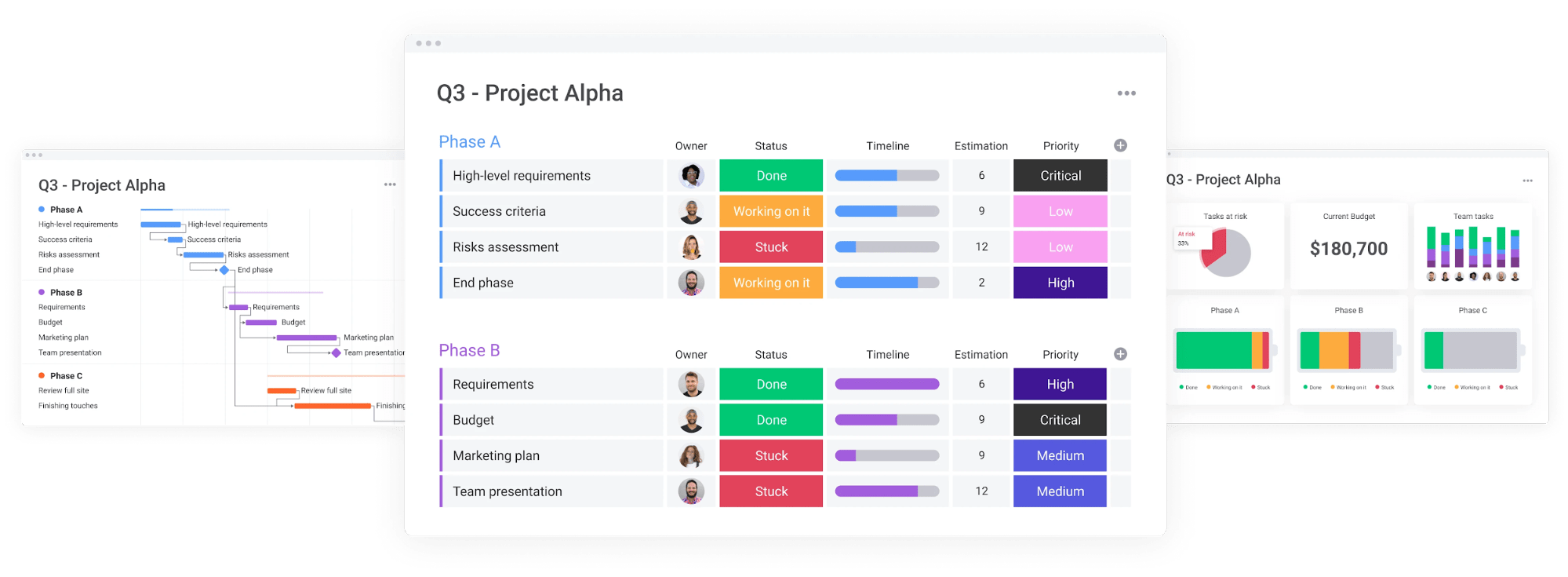Most teams settle for an unstructured brainstorming session where everyone tries to figure out a challenging topic together. The average kindergarten class is more orderly and — let’s be honest — more productive.
But since you’re looking for new tricks, you already know this isn’t the best way to generate ideas.
Strong personalities can end up dominating the ideation session. Instead of ideas standing on their own merits, whoever takes the initiative leads the conversation.
That leads to a narrow set of often closely related ideas.
But with the 10 brainstorming techniques, we cover below, you can minimize this issue and produce better, more original ideas.
What are brainstorming techniques?
Brainstorming techniques are methods that let you better structure brainstorming sessions for better results. It may sound counterintuitive, but by implementing structure and rules, you can generate more fresh ideas.A growing body of research shows that a simple brainstorming session is often counterproductive. It can lead to fewer ideas of lower quality than just a person sitting down to think.
Thankfully, some techniques can limit the downside while maximizing the upside.
What are the 7 rules of brainstorming?
Design Thinking leader Ideo has developed a set of 7 rules for brainstorming. These rules help you get better results, regardless of which technique you use.

- Defer judgment: first, you want to list all ideas, not try to rank or evaluate them based on quality.
- One conversation at a time: make sure everyone gets to speak.
- Encourage the wild idea: moonshots can help you find a different perspective. Innovative ideas often start out seeming unrealistic — imagine pitching the moon landing to a caveman.
- Be visual: use tools for visualization, like mind maps, to help everyone keep track of the conversation.
- Build on others’ ideas: mix, match, and expand on existing ideas to find the new ones.
- Go for quantity: don’t try to create a list of fully-formed solutions. Stick to rough, high-level ideas in the first round.
- Stay on topic: it’s easy to go off course in any meeting, especially free-format brainstorming.
10 cutting-edge brainstorming techniques for your team to try
Let’s explore common brainstorming techniques that anyone can use to develop better ideas faster.
1. Brainwriting
You don’t meet with the team and start discussing at once. Instead, you give everyone a chance to write down their unique ideas first. It begins with silent, individual brainstorming.
Then, instead of out-loud, chaotic discussions, everyone swaps their paper slips. All team members then expand on or add new ideas to the note they received.
You can then repeat this step multiple times until finally collecting all ideas and sharing them. You end a session with a collective discussion about the ideas.
“Rapid Ideation” is a variation where everyone writes silently during the first 5–15 minutes of a brainstorming session.
2. Mind mapping
A mind map is an excellent tool for creating more varied and realistic ideas that consider the big picture.
Outlining all the moving parts and the relationships between them makes it easier to generate robust ideas.
For example, if you want to brainstorm ideas for your marketing campaign, having all areas on the table will lead to a broader range of solutions.

Your team will stop focusing on the shiniest option, like a new social media campaign. The whole picture is right there. Everyone will consider the impact of partnerships, analytics, and more.
3. Concept mapping
Unlike a mind map, a concept map is conceptual. It outlines the relationship between different concepts during ideation.
It’s a great tool during the latter stages of brainstorming when you start to explore ideas in-depth.
For example, you can visually “build” different solutions with the necessary resources and potential impact.
Concept mapping helps you evaluate the viability of different ideas and explore the relationship between them. You can combine it with associative brainstorming.
4. Step-ladder technique
With the step-ladder technique, you start by sharing the topic with everyone in the room — ideally 8 people or fewer.
But then, you send everyone except 2 people out of the room. This pair will come up with ideas for a limited time, often around 5 minutes.
Then they’ll invite another person into the room and ask them about their ideas. After adding the new ones, discuss the generated ideas with the third person. Repeat this step — keeping all new members — until everyone joins in.
With everyone back in the room, you then discuss all the ideas and single out the best ones.
5. Figure, role, and what if brainstorming
These are variations of a simple but powerful brainstorming strategy — putting yourself in someone else’s shoes.
For example, in figure and role brainstorming, you focus on channeling a specific role or persona. You could ask everyone to look at the problem from the perspective of a CIO or a customer support rep.
With the “what if” approach, you imagine a specific situation instead. For example, how would we handle the problem if we only had 2 weeks to do so?
By forcing your team to approach the issue from a new angle, you open up new possibilities. They may consider potential risks or solutions nobody would have given a second thought otherwise.
Get the creative juices flowing by stepping into someone else’s shoes.
6. Charette Procedure
The Charette Procedure is almost like a scaled-up version of brainstorming. It works best with at least 10–15 active team members and stakeholders.
In Charette, you break down the problem into topics and assign them to different groups. A person on each team — called the recorder — takes meticulous notes.
This brainstorming process plays out as multiple simultaneous sessions.
- Divide the main idea into specific topics.
- Break teams into groups and assign issues.
- Each group discusses separately — and notes down all ideas.
- The recorders move to different groups and share their group’s ideas.
- Hold a final brainstorming meeting where all teams discuss their final ideas and create a prioritized list.
The first step might seem complicated, but it’s usually fairly straightforward. For example, when trying to imagine a new campaign, it has natural divisions.
- Product experts could think of seasonal products to create.
- Salespeople could work on price or feature-based promotions.
- The social media team could work on PR and social media ideas.
Structure isn’t the enemy of creativity. In big groups, it’s necessary and helps you generate more fresh ideas.
7. SWOT analysis
SWOT analysis stands for strengths, weaknesses, opportunities, and threats analysis.
Essentially, you start with market research and compare yourself honestly against your competitors. You then break your insights down into the SWOT format.
Many companies use it to help guide their marketing campaigns in the right direction.

But you can also use it for new products and other big decisions.
8. The 5 whys
The 5 whys is an iterative technique used for exploring the underlying causes of a particular problem. Essentially, you keep asking the same simple question to dig deeper.
Problem: a customer unsubscribed from our service
- Why? They had a negative customer service experience.
- Why? The agent gave them the wrong answer.
- Why? The agent was new and poorly trained.
- Why? We have a high support rep turnover rate.
- Why? Our company doesn’t allocate enough resources to support.
9. Reverse brainstorming
Focus not on how to solve a problem, but how to cause it. Outline all the underlying factors you might ignore when brainstorming.
How would you make sure a product failed?
- Delay the first shipment.
- Fall short of promised retailer quotas.
- Etc.
10. Round-robin brainstorming
Round-robin brainstorming solves the issue of the open-format variant by giving everyone a chance to speak.
- Everyone must contribute 1 original idea.
- “Someone said my idea already” isn’t a valid excuse.
How monday.com can take your brainstorming to the next level
With the right platform, it’s a lot easier to innovate and make changes within your company.
81% of digitally mature companies are strong innovators, compared with 36% from developing outfits and only 10% from early-stage companies.
monday.com lets you reach digital maturity in a single transition. You can use our Work OS to build the digital workspace your team needs.
Use our interactive whiteboard to brainstorm.
With even a single remote employee, brainstorming gets that much harder. That’s where our interactive whiteboard comes in.
Instead of video calls, you can hold engaging idea generation meetings online. It’s easy. Just create a board, and everyone can create, drag, and edit items in real-time.

You can easily create a concept or mind map and visualize everyone’s thought process. It makes remote collaboration more interactive and engaging.
Evaluate ideas with Kanban boards.
You can also create a process for evaluating ideas using a Kanban board or our default grid view.
Easily share access with key stakeholders or management. That way, you can make sure everyone is on the same page before jumping into a project.
Add every new idea directly to project workflows.
Of course, monday.com isn’t just a basic ideation or real-time collaboration platform. It offers all the project management functionality you need.

Use our native integrations and automations to build the platform you need to get more, higher-quality work done.
Don’t rely on spreadsheets, email, and lazy hacks. Take your company to the next level.
Good brainstorming leads to a more effective company
Good ideas aren’t just crucial when planning and launching new projects or products. They can also help you improve existing processes and make significant improvements to your bottom line.
The right brainstorming techniques and frameworks can help you utilize good thinking skills at scale.
Use monday.com and our ready-made interactive whiteboard to start doing remote brainstorming without issue.

